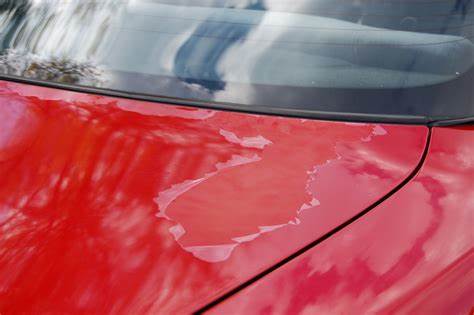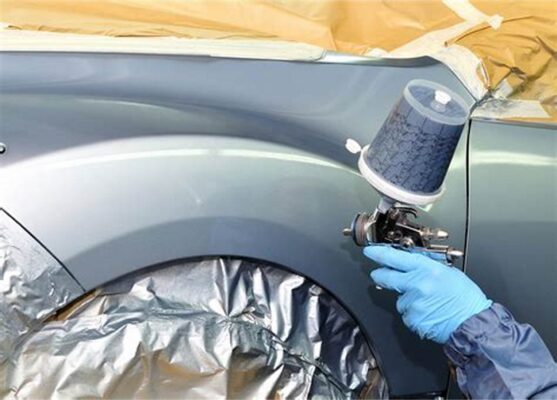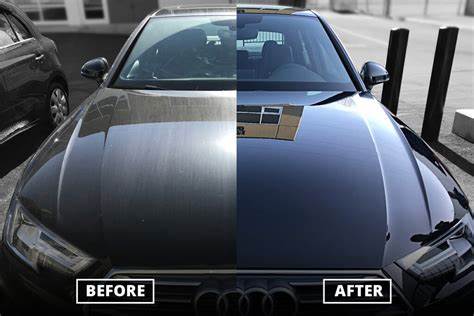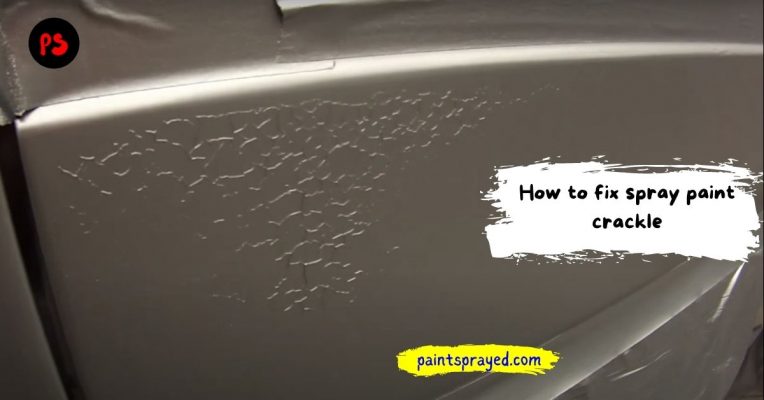Paint over clear coat is a process that requires careful preparation to achieve the best results. For car owners who want to update their vehicle’s appearance, the first step is to sand the existing clear coat. Sand the surface creates a rough texture that helps the paint stick properly.
After you sand, it’s important to clean the surface thoroughly to remove any debris. This ensures that the paint will bond effectively to the surface. When applying the paint, make sure to cover the entire car evenly to achieve a consistent finish.
Properly painted surfaces not only enhance the look of the car but also provide protection against rust and other damage. By preparing the surface correctly and applying the paint evenly, you ensure that the new layer will stick well.

Can you paint over clear coat?
Yes, you can paint over clear coat, but proper preparation is key to achieving a high-quality finish. First, the existing clear coat needs to be shored to create a suitable surface for the new paint. This involves using a wet sanding block to remove the glossy finish and help the primer stick better.
Once shored, the surface should be cleaned to remove any dust before you apply primer. It will improve adhesion and ensure an even base for the fresh paint. After the primer dries, you can apply your new paint in thin, even coats. Allow each coat to dry completely before adding the next.
Finally, apply a fresh clear coat to protect the new paint and give it a glossy shine. This process ensures that the new color adheres well and provides a durable.

What preparation is needed before painting over a clear coat?
Before painting over a clear coat, several key preparation steps are essential to ensure a successful paint job.
First, thoroughly clean the surface to remove dust, dirt, and any residues. Then, use a block or wet sanding to lightly scuff the existing clear coat. This step helps the new paint adhere better by creating a rough surface.
After sanding, wipe the surface clean to remove any dust and allow it to dry. Apply primer designed for use over clear coats to improve adhesion. Once the high-quality primer is dry, apply the base coat of your chosen paint, ensuring it is evenly spread.
After the base coat has dried, finish with a fresh coat of clear coat to protect the new paint and add a glossy shine. Each layer, from primer to clear coat, should be allowed to completely dry before applying the next.

How does painting over a clear coat affect the final finish?
Painting over a clear coat can significantly impact the final finish of your spray job. The existing clear coat, if properly prepared, provides a surface that can enhance the adhesion of new paint.
However, to ensure a high-quality finish, the clear coat needs to be carefully sanded using a sanding block or wet sanding process to create a suitable surface for primer application.
Applying it over the sanded clear coat is crucial as it helps the new paint stick effectively. It also ensures that the job has an even base, which contributes to a smooth and uniform finish.
After applying the primer, the new paint should be sprayed in thin, even coats, allowing each layer to dry before applying the next.
The final coat of paint and clear coat will determine the overall appearance, including gloss and durability. If done correctly, painting over a clear coat can result in a fresh, glossy finish that enhances the look of your car while protecting against wear and environmental damage.

Are there specific types of paint or primers required to paint over clear coat?
Choosing the right fuse
When you paint over clear coat, selecting the right fuse is crucial. It is designed for smooth, glossy surfaces is essential as it helps the new paint stick to the old clear coat. This fuse creates a solid base for the fresh paint, ensuring proper adhesion and a smooth finish.
Selecting fresh paint job(existing auto paint)
For the not old paint, opt for a product compatible with the fuse and the existing auto paint. Polyurethane is often a good choice due to its durability and glossy finish. Ensure that the paint matches well with the fuse and is suitable for automotive applications.

Preparation process
Before applying new paint, thoroughly prepare the surface. This involves sanding the existing clear coat to create a rough texture that allows the fuse and paint to adhere effectively. Use appropriate sand tools and techniques to remove the gloss from the second coat. After you sand, wipe the surface clean to remove any debris.
Application of paint
Apply the fuse first, allowing it to dry completely. Then, proceed with the first coat of paint. Multiple coats may be necessary, with each coat requiring complete drying before applying the next. Finish with a clear coat if desired, to provide an additional protective layer and enhance the gloss of the entire car.
How does painting over a clear coat impact the durability of the job?
Surface preparation
Proper surface preparation is essential for durability when painting over a clear coat. Sand the old clear coat creates a rough surface that helps the car paint stick better. This process ensures that the paint sticks well and reduces the risk of peeling or flaking.
Paint durability
The durability of the job depends on how well the surface was prepared. A well-sand and clean surface allows the car paint to bond effectively, providing better protection against rust and environmental damage.
Final protection
Applying a protective layer, such as a new clear coat, over the car paint can enhance its durability. This layer helps shield the new color from scratches, UV rays, and wear, ensuring a longer-lasting and resilient finish.

What are the risks of painting over a clear coat?
Paint over a clear coat carries several risks if not done correctly. One of the primary risks is inadequate adhesion of the paint. Without proper surface preparation, such as sanding the clear coat.
This can lead to peeling or bubbling, which compromises the appearance and protection of the paint job.
Additionally, if the clear coat is not properly prepared, the underlying metal may become exposed to the elements, increasing the risk of rust.
Another risk, apart from rust, is that the paint may not achieve a smooth or uniform finish if the clear coat isn’t adequately cleaned.
This can affect the overall aesthetic of the painted surface. Proper preparation is crucial to avoid these issues, ensuring that the paint adheres well and provides lasting protection against rust and other environmental damage.

Conclusion
In conclusion, painting over a clear coat requires meticulous preparation and application to ensure a successful outcome. Properly sanding the existing clear coat and thoroughly cleaning the surface are crucial steps to achieve a well-adhered paint layer.
When executed correctly, this process not only refreshes the appearance of your vehicle but also provides essential protection against rust and other environmental damage.
By ensuring that the entire surface is well-prepared and evenly painted, car owners can achieve a durable and aesthetically pleasing finish that shields the metal from deterioration.

Matthew Edward is a professional painter who loves to paint and wants to share useful tips and tricks which he had learned in many years of experience in painting. He also used many products that can be used for painting he has tried and tested each and every product to give an unbias opinion about it in his review. This blog is very useful for those newbies who want to learn painting without making mistakes.






